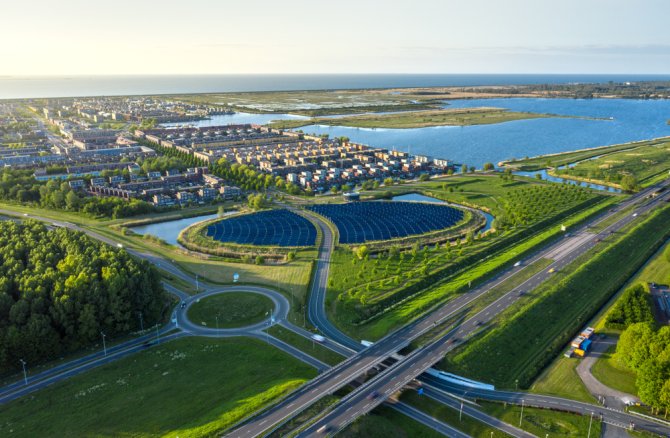
Impact story
A liveable city thanks to green
More green makes cities healthier and safer, and it contributes to biodiversity. Research and new methods such as bicycle measurements and an app, Wageningen University & Research (WUR) contributes to a greener living environment.
A barren city can get very warm in the summer and remain warm for a long time. Cities constructed mainly from brownstone, concrete and tarmac, do not cool rapidly, making the difference in temperature compared to the environment some 10 degrees Celsius. This poses a threat to vulnerable inhabitants such as the elderly and those suffering from heart conditions. During the heatwaves of 2003 and 2006, mortality data in Europe showed just how dangerous this can be, as the heatwaves resulted in 1000 and 2200 more deaths than in a normal year. In 2010, 500 people perished as a result of heat. Mortality rates increase by about 13% during heatwaves.
Cooler and dryer
WUR knows there is an excellent solution to this issue: more green. Green trees and shrubs help cool the city through evaporation and offer shade. The difference? A bitumen roof can get as hot as 70 °C, while the temperature of a roof covered in moss and grass climbs no higher than 32°. Moreover, a green city is better equipped to handle the increase in average temperatures caused by climate change.

Planting more trees and plants also prevents excess precipitation, as green also combats flooding. In green urban areas, the soil has better drainage so that water seeps into the ground, while plants also absorb water. This unburdens the sewage system, as between 4 and 19% of the water is retained.
Collecting data by bike
WUR scientists mapped the heat in various cities such as Rotterdam, Wageningen and Utrecht. Where do so-called heat pockets occur, and where does the city remain cool? In Utrecht, the green infrastructure was precisely mapped and included in maps and graphs that can be used as a basis for new policies. For Rotterdam, WUR scientists developed tools to help design a greener city. There, a city park measuring eighty thousand square metres was created on the roof of a shopping centre.
A bicycle with measuring equipment was developed to collect data for these studies. A ride through town gathers information on the temperatures and the reflection of sunlight. This data was then used to develop an app that warns inhabitants and governments about neighbourhoods that pose a heat risk. This is the first step towards tools and computational models that enable city planners to include green in their designs.
Exercise in the green
The impact of green goes beyond keeping feet dry and temperatures under control. A Wageningen study showed that people are more motivated to exercise in a green environment and are able to maintain their exercising habit for up to a year longer. Green can thus contribute to a sustainable lifestyle change. Plants also filter the air and muffle sounds. Moreover, if there is more green, this helps other small plants, insects and animals to find a safe habitat, ultimately increasing biodiversity.
Wageningen University & Research continues its research on the effect of green in making our cities more liveable, healthier and sustainable. Thus, we will achieve the city of the future.